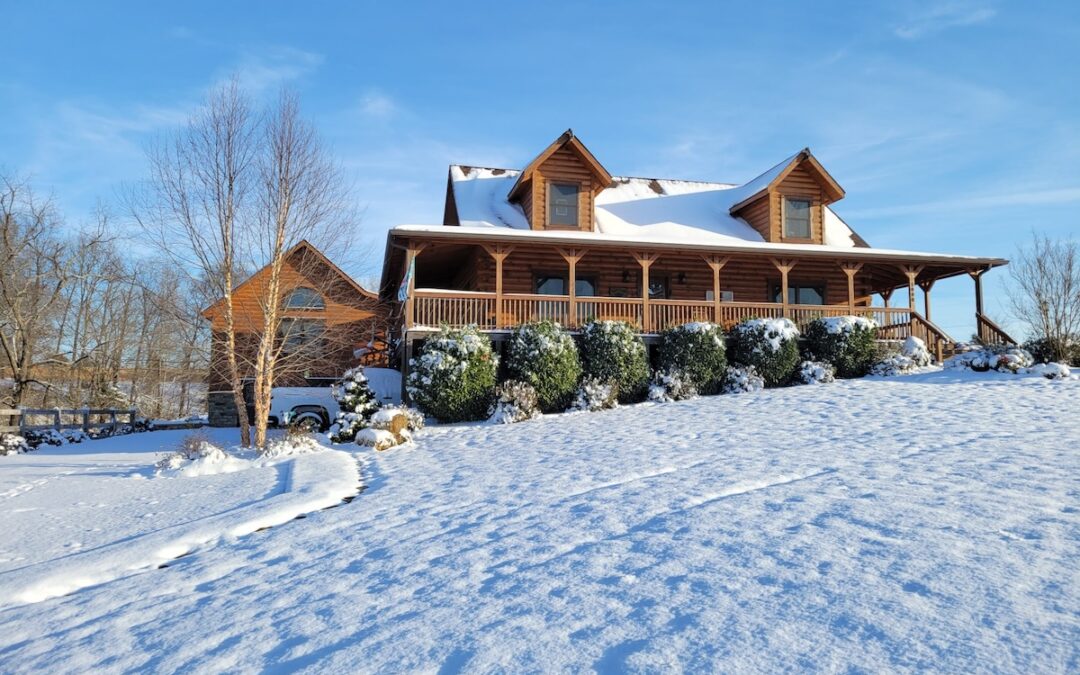Building a log or timber frame home is not just about creating a beautiful and durable structure—it’s also an opportunity to embrace eco-friendly building practices that reduce environmental impact and improve energy efficiency. With sustainable materials, energy-efficient design, and modern green technologies, you can create a home that is both comfortable and environmentally responsible.
In this guide, we’ll explore how to make your log or timber frame home more sustainable, from responsible material sourcing to energy-saving features and waste reduction strategies.
Choose Sustainably Sourced Wood
Since log and timber frame homes rely heavily on wood, it’s essential to source materials responsibly. Look for certified sustainable wood, such as lumber from forests certified by the Forest Stewardship Council (FSC) or the Sustainable Forestry Initiative (SFI). These certifications ensure that trees are harvested responsibly and that new trees are planted to maintain healthy forests.
Best Wood Choices for Sustainability:
-
Locally Sourced Timber – Reduces transportation emissions and supports regional forestry.
-
Reclaimed Wood – Salvaged from old buildings or barns, reducing waste and adding character.
-
Engineered Wood – Uses smaller pieces of wood bonded together, maximizing resource efficiency.
Maximize Energy Efficiency
An eco-friendly home should be designed to use less energy while maintaining comfort year-round. Consider these strategies to improve your home’s energy performance:
Insulation & Air Sealing
-
Structural Insulated Panels (SIPs) – Used in timber frame homes, SIPs provide excellent insulation and airtightness.
-
Chinking & Sealing for Log Homes – Properly sealed logs prevent drafts and improve thermal efficiency.
-
Energy-Efficient Windows & Doors – Double or triple-pane glass reduces heat loss.
Passive Solar Design
-
South-Facing Windows – Allow natural sunlight to warm the home in winter.
-
Overhangs & Shading – Prevent overheating in summer.
-
Thermal Mass Materials – Stone or concrete floors absorb and retain heat.
Use Renewable Energy Sources
To reduce reliance on fossil fuels, integrate renewable energy into your home:
-
Solar Panels – Generate clean electricity and reduce energy bills.
-
Geothermal Heating & Cooling – Uses stable underground temperatures for efficient climate control.
-
Wind Turbines – If your property has enough wind exposure, small turbines can supplement energy needs.
By combining energy-efficient design with renewable energy, your home can significantly reduce its carbon footprint.
Incorporate Water Conservation Techniques
Sustainable homes also focus on reducing water waste and improving efficiency. Consider:
-
Rainwater Harvesting Systems – Collect and store rainwater for irrigation or household use.
-
Low-Flow Fixtures – Reduce water consumption without sacrificing performance.
-
Graywater Recycling – Reuse water from sinks and showers for irrigation.
Timber frame and log homes naturally blend with their surroundings, making water conservation a great way to protect local ecosystems.
Choose Non-Toxic & Sustainable Finishes
Many conventional paints, stains, and finishes contain volatile organic compounds (VOCs) that can harm indoor air quality. Opt for:
-
Low-VOC or Zero-VOC Stains & Paints – Reduce harmful emissions and improve air quality.
-
Natural Oils & Waxes – Provide protection without chemicals.
-
Clay or Lime-Based Plasters – A breathable and eco-friendly alternative to drywall.
By selecting eco-friendly finishes, you create a healthier living environment for your family.
Reduce Waste & Recycle Materials
During construction, minimizing waste and using recycled materials can make a big impact:
-
Pre-Cut Logs or Timbers – Reduces on-site waste.
-
Recycled Metal Roofing – Durable and sustainable.
-
Reclaimed Wood for Floors & Beams – Adds character while reducing new lumber use.
-
Composting & Recycling on Site – Keeps waste out of landfills.
A well-planned project can be both beautiful and environmentally responsible.
Maintain Your Home Sustainably
Once your log or timber frame home is built, ongoing eco-friendly maintenance will keep it sustainable:
-
Use Natural Cleaners – Avoid harsh chemicals that can damage wood and harm the environment.
-
Monitor Energy Use – Smart thermostats and energy-efficient appliances help conserve power.
-
Plant Native Landscaping – Reduces water use and supports local wildlife.
With these small steps, you can ensure that your home remains green and efficient for generations to come.
Building an eco-friendly log or timber frame home isn’t just good for the environment—it also creates a healthier, more energy-efficient space for you and your family. By choosing sustainable materials, incorporating energy-saving features, and reducing waste, you can enjoy the beauty of nature while protecting it.
At Serenity Log Homes, we specialize in building sustainable, high-quality log and timber frame homes that align with your eco-friendly goals. Contact us today to start planning your dream green home!

